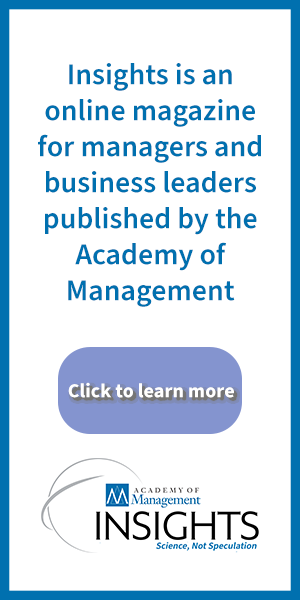Published on: April 3, 2025 at 7:30 pm
Leaders who can install processes for effective, timely information-sharing, fair workload distribution, and civil communication—including positive feedback—foster the best collaboration and productivity among team members.
Academy of Management Scholar Peter Bamberger of Tel Aviv University said that lackluster productivity is often a result of poor information-sharing and workload-sharing behaviors.
“Team processes are hard; people can’t always pick up the signals that they need to,” Bamberger said. “For example, if they have a piece of information that someone else needs, when should they pass it on to this other person? A nurse has a test result; when should she pass it on to the to the team leader or attending physician?
“If she passes it on too early, she’s going to disrupt what they’re doing, which clearly affects their performance, but if she passes it on too late, it could be deadly, so timing and synchrony of such tasks are crucial,” he said.
Incivility and rudeness also undermine productivity, while civility and kindness tend to boost it.
“In research on medical teams, we demonstrated that when people experience gratitude at work it can often, but not always, have beneficial implications,” Bamberger said. “A lot depends on the source of the gratitude and the nature of the task at hand.
“In one experiment, we had the three teams: a control condition, one that viewed a video before they started the day from a senior neonatologist talking about how grateful he is to everybody in the field for doing the wonderful work they do to save these babies, which had nothing in terms of a productivity boost, but then we had a third group where we had a mother of a preemie talk about how grateful she was to the medical team that saved her child, and that had massive positive effects,” he said.
“We demonstrate what that does to the team interaction through the implications based on a theory in cognitive science called [Fredrickson’s]broaden-and-build, which explains how positive emotions have beneficial effects on people’s ability to be flexible in their thinking, to absorb more information, and things like that.”
Bamberger and colleagues also demonstrate that the effects were much stronger when a mother expressed gratitude than when a senior colleague did.
Sharing positive customer feedback
Business leaders and managers can leverage these insights to improve their effectiveness.
“They can demonstrate gratitude themselves; it does make intuitive sense that if managers and leaders behave with civility and politeness, then that may set an example for the rank-and-file employees to do the same, but they can encourage customers and clients or patients to say ‘thank you’ directly,” Bamberger said. “If you like the way a flight attendant treated you on a flight, you’re supposed to write the company, but what if you were actually put in direct contact with the flight attendant and were able to express the gratitude directly?
“Our evidence suggests that that’s going to have a much stronger effect than a manager saying, ‘You got three positive letters this week,’” he said. “Setting up systems for customers to directly express positive feedback has the potential to significantly boost employee morale and performance.”












